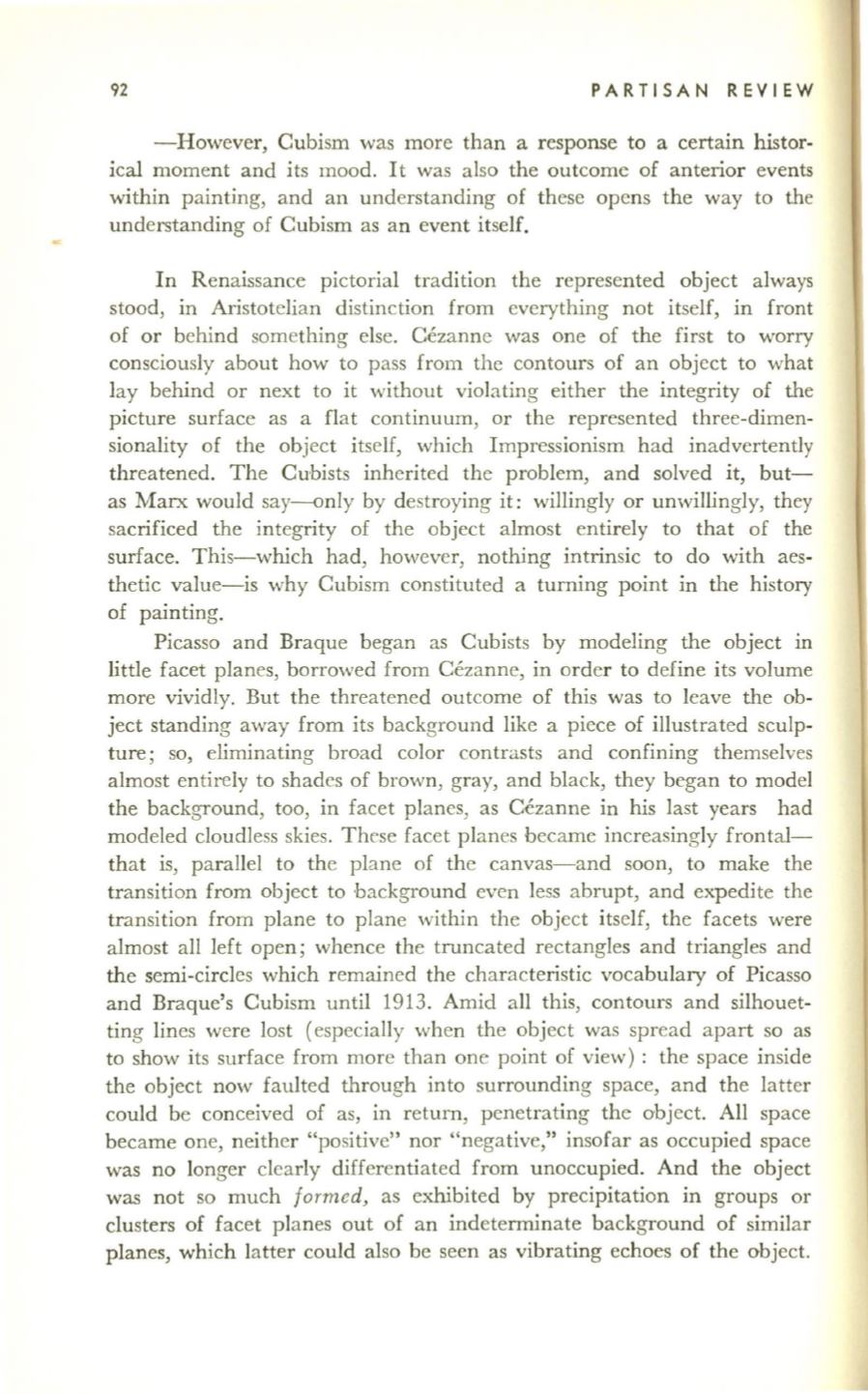
92
PARTISAN REVIEW
-However, Cubism was more than a response to a certain histor–
ical moment and its mood. It was also the outcome of anterior events
within painting, and an understanding of these opens the way to the
understanding of Cubism as an event itself.
In Renaissance pictorial tradition the represented object always
stood, in Aristotelian distinction from everything not itself, in front
of or behind something else. Cezanne was one of the first to worry
consciously about how to pass from the contours of an object to what
lay behind or next to it without violating either the integrity of the
picture surface as a flat continuum, or the represented three-dimen–
sionality of the object itself, which Impressionism h ad inadvertently
threatened. The Cubists inherited the problem, and solved it, but–
as Marx would say-Dnly by destroying it: willingly or unwillingly, they
sacrificed the integrity of the object almost entirely to that of the
surface. This-which had, however, nothing intrinsic to do with aes–
thetic value-is why Cubism constituted a turning point in the history
of painting.
Picasso and Braque began as Cubists by modeling the object
in
little facet planes, borrowed from Cezanne, in order to define its volume
more vividly. But the threatened outcome of this was to leave the ob–
ject standing away from its background like a piece of illustra ted sculp–
ture; so, eliminating broad color contrasts and confining themselves
almost entirely to shades of brown, gray, and black, they began to model
the background, too, in facet planes, as Cezanne in his last years had
modeled cloudless skies. These facet planes became increasingly frontal–
that is, parallel to the plane of the canvas-and soon, to make the
transition from object to background even less abrupt, and expedite the
transition from plane to plane within the object itself, the facets were
almost all left open; whence the truncated rectangles and triangles and
the semi-circles which remained the characteristic vocabulary of Picasso
and Braque's Cubism until 1913. Amid all this, contours and silhouet–
ting lines were lost (especially when the object was spread apart so as
to show its surface from more than one point of view): the space inside
the object now faulted through into surrounding space, and the latter
could be conceived of as, in return, penetrating the object. All space
became one, neither "positive" nor "negative," insofar as occupied space
was no longer clearly differentiated from unoccupied. And the object
was not so much
formed,
as exhibited by precipitation in groups or
clusters of facet planes out of an indeterminate background of similar
planes, which latter could also be seen as vibrating echoes of the object.


